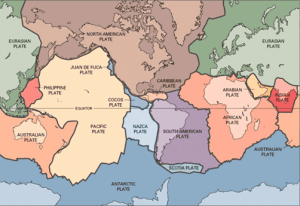CAMEROON ADOPTS NAGOYA PROTOCOL TO HARNESS BIODIVERSITY BENEFITS
TAG: GS 3: ECOLOGY AND ENVIRONMENT
THE CONTEXT: Cameroon, a biodiversity-rich nation in central Africa, has taken a significant step toward ensuring fair and equitable sharing of benefits from its vast biological resources.
EXPLANATION:
- The adoption of the Nagoya Protocol on Access and Benefit Sharing reflects the country’s commitment to addressing historical exploitation and promoting sustainable practices.
- This protocol, an offshoot of the Convention on Biological Diversity, aims to establish a framework for the just distribution of benefits derived from genetic resources and traditional knowledge.
Cameroon’s Biodiversity Landscape:
- Biodiversity Hotspot:
- Cameroon boasts an estimated 11,000 plant, animal, and microorganism species, making it a biodiversity hotspot.
- The genetic information and resources within these species hold value for bioprospecting activities, including the development of medicines and crops.
- Traditional Knowledge Significance:
- Indigenous and local communities in Cameroon possess valuable traditional knowledge related to genetic resources, enhancing the country’s bioprospecting potential.
Nagoya Protocol: A Framework for Fairness:
- Overview of Nagoya Protocol:
- The Nagoya Protocol, an extension of the Convention on Biological Diversity, addresses fair and equitable benefit sharing in biodiversity access.
- It aims to rectify imbalances where foreign companies have historically exploited resources without providing equitable benefits to local communities.
- Example of Prunus Africana:
- The case of Prunus Africana highlights the disparity, with foreign companies buying the plant for a minimal amount but selling the derived drugs at a significantly higher price.
- The adoption of the Nagoya Protocol is expected to rectify such inequities.
Challenges and Initiatives:
- Challenges Faced by Cameroon:
- Despite enacting laws and decrees to implement the Nagoya Protocol, Cameroon faces challenges such as a lack of implementing instruments, institutional capacity, and research and development on the biodiversity value chain.
- Global Environment Facility Support:
- To address these challenges, the Global Environment Facility is funding a project titled ‘Support to Nagoya Protocol Implementation, Research and Development on Biodiversity Value chain for small holders in the South West and Far North Regions of Cameroon.’
- The project aims to enhance research, bioprospecting, and the overall understanding of biodiversity value chains.
Focus on Bush Mango and Indigenous Species:
- Bioprospecting Initiatives:
- The project supports bioprospecting activities on selected species, including Irvingia wombulu (bush mango), Monodora myristica, Balanites aegyptiaca, and Acacia nilotica.
- Bush mango, a significant biological resource in Cameroon, holds medicinal properties and is crucial for traditional medicine and culinary practices.
- Economic Opportunities and Export Potential:
- Bush mango has attracted interest from European pharmaceutical and cosmetic companies.
- Farmers, such as Thomas Arrey Ayuk, anticipate increased value for their produce, better export opportunities, and potential benefits for community development.
Strategic Agreements and Economic Potential:
- Cameroon’s Agreements with French and Swiss Companies:
- Cameroon has signed agreements with French and Swiss cosmetic businesses under the Nagoya Protocol.
- These agreements involve research and development on indigenous species and set the stage for future commercial activities.
- Unlocking Africa’s Economic Potential:
- The Nagoya Protocol is seen as a tool for African nations to master the true value of their biological resources, empowering them in negotiations with companies.
- Recognizing and exploiting these resources in alignment with the protocol is viewed as a key to unlocking Africa’s economic potential.
Conclusion:
- Cameroon’s adoption of the Nagoya Protocol represents a pivotal move towards just and sustainable practices in utilizing its biological wealth.
- By addressing historical imbalances and promoting fair benefit-sharing, the country aims to harness the economic potential of its biodiversity, emphasizing the need for responsible exploitation and conservation efforts.
- The collaborative initiatives and agreements signal a commitment to a more equitable and mutually beneficial relationship between Cameroon’s biological resources and global industries.

 Solar activity
Solar activity